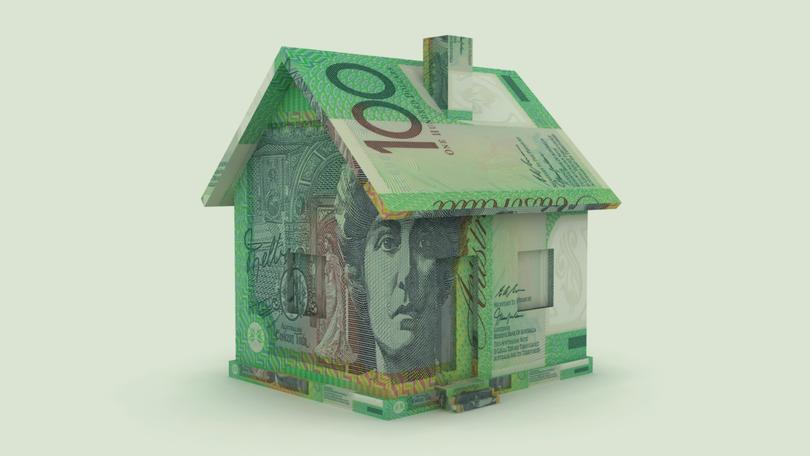Nick Bruining: Home Equity Access Scheme a dirt-cheap lifeline for cash-strapped pensioners

It is a common enough complaint for many seniors — living out retirement in their family home which has surged in value over recent years: “I’m asset rich, but cash-flow poor”.
Fortunately, there’s a relatively low-cost way of tapping into the value of your home, providing funds to either top up your age pension or to splurge some money on a holiday to Phuket.
Called the Home Equity Access Scheme, it is effectively a reverse mortgage operated by the Federal Government but without many of the strings and charges associated with a commercial reverse mortgage.
Sign up to The Nightly's newsletters.
Get the first look at the digital newspaper, curated daily stories and breaking headlines delivered to your inbox.
By continuing you agree to our Terms and Privacy Policy.The downside is that for people on a full or part-age pension, the amount you can access is limited.
A reverse mortgage is a loan secured against real estate like the family home. Depending on the provider, the loan can be paid to the borrower by regular instalments — perhaps to top up income — or as a lump sum amount to fund a trip or other big expense.
Unlike a conventional mortgage, there’s no requirement to make regular payments on the loan.
Instead, the interest being charged is added to the loan balance, and when the property is sold the loan amount — plus accrued interest — is repaid from the proceeds of the sale. The problem is that if the loan and interest are allowed to accumulate over many years, the amount to be repaid can be significant.
For example, a 65-year-old who borrows $50,000 today using a commercial reverse mortgage charging a typical interest rate of about 9 per cent a year would see the loan balance at the age of 70 grow to about $84,000.
At 85, the compounding effects would mean the outstanding balance would be more than $305,000.
This doesn’t include the other charges, including regular inspection and other fees that a commercial operator is likely to charge along the way.
If the senior is moving into age care at that age, the amount left over after their home is sold and loan repaid might not be enough to pay for the refundable accommodation deposit in full.
The reality is, however, that might only be an issue for someone hoping to leave their descendants a sizeable nest egg.
Because the compounding effects can become significant over time, reverse mortgage providers typically limit the amount you can borrow, and that amount is linked to your age.
For example, a 60-year-old can typically borrow 15 per cent of the property’s value, but an 85-year-old is able to borrow 45 per cent.
The key to minimising the impact of compound interest is to try and limit the length of time the reverse mortgage is in place and the interest rate being charged.
Enter the Home Equity Access Scheme (HEAS) with an interest rate of just 3.95 per cent.
Administered by Services Australia through Centrelink, HEAS allows you to access up to 150 per cent of the current age pension, either through fortnightly payments, lump-sum amounts or a combination of the two.
You can’t exceed the 150 per cent limit under any circumstances so a single full-age pensioner could access the “extra” 50 per cent as a HEAS. In this case, you can bring forward up to 26 weeks of extra payments — or a maximum of $7295.55.
A person who doesn’t otherwise qualify for a pension because of means testing, however, could access the full 150 per cent under HEAS as lump-sum payments, but this needs to be in two payments of 75 per cent each, separated by a period of six months.
It means, for example, a single could access $43,535.70 in a year, based on the current full pension of $1116.30 a fortnight. A couple, on the other hand, could access up to $65,629.20 under HEAS.
The maximum amount you can borrow is a calculation based on your age and the value of the real estate asset you are offering as security for the loan.
A 70-year-old single with a property valued at $800,000 could borrow up to $246,000. In the case of a couple, there’s a different calculation based on each individual’s age.
Most significantly, the interest rate charged under HEAS is currently 3.95 per cent a year, which is less than half the cost of most commercial reverse mortgages. While this rate can change, according to comparison website Finder, reverse mortgage interest rates currently range from about 8.7 to 9.8 per cent.
In our $50,000 example, the difference in the outstanding loan amount at age 85 with rates at 3.95 per cent instead of 9 per cent would be a staggering $192,000 .
Instead of a $305,000 balance at 85, the balance would be about $113,000, leaving plenty for aged care accommodation or for your loved ones.
Nick Bruining is an independent financial adviser and a member of the Certified Independent Financial Advisers Association
Originally published as Nick Bruining: Home Equity Access Scheme a dirt-cheap lifeline for cash-strapped pensioners

